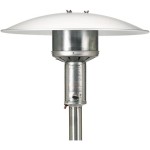How to Repair a Cement Patio
A cement patio can provide a beautiful and durable outdoor space for relaxation and entertaining. However, over time, cracks, chips, and other forms of damage can occur, diminishing its aesthetic appeal and functionality. Fortunately, repairing a cement patio can be accomplished with the right tools, materials, and techniques. This article will outline a comprehensive guide to help homeowners effectively repair their cement patios.
Assess the Damage
The first step in repairing a cement patio is to thoroughly assess the extent of the damage. This involves carefully inspecting the entire surface for cracks, chips, holes, and other imperfections. The size, depth, and location of the damage will determine the best repair approach. Small cracks can be filled with a sealant, while larger cracks may require patching. Chips and holes may need to be filled with concrete patching compound. It is crucial to determine if the damage is superficial or indicative of a more significant structural problem. If there are signs of structural damage, such as large cracks or shifting slabs, it is advisable to consult with a professional contractor for a proper evaluation and repair.
Prepare the Surface
Once the damage is assessed, the next step is to prepare the surface for repair. This involves cleaning the area to be repaired, removing loose debris, and roughening up the edges of the damaged area. A stiff bristled brush and a garden hose can be used to remove dirt, leaves, and other debris. For a more thorough cleaning, a pressure washer can be employed. After cleaning, the surrounding area should be masked off using painter's tape to prevent the repair material from spreading beyond the desired area. To create a good bond between the repair material and the existing concrete, the edges of the damaged area should be roughened up using a wire brush or a masonry chisel. This process, known as "roughing," allows for better adhesion and prevents the repair material from separating from the existing concrete.
Fill Cracks and Holes
Once the surface is prepared, cracks and holes can be filled with appropriate repair materials. For small cracks, a sealant specifically designed for concrete can be used. This type of sealant is typically applied with a caulking gun and smooths out easily with a putty knife. For larger cracks and holes, a concrete patching compound is recommended. This compound is available in different formulations, such as powder or pre-mixed, and can be applied with a trowel. The patching compound should be carefully applied to the crack or hole, pressing it firmly into place and ensuring that it is level with the surrounding surface. Before applying the patching compound, it is important to ensure the area is damp to avoid the material drying out too quickly. Once the patching compound is applied, allow it to set and cure according to the manufacturer's instructions. The curing time may vary depending on the type of patching compound used, the temperature, and humidity levels.
Resurface and Seal
If the patio has significant damage or a worn-out surface, resurfacing can significantly enhance its appearance and functionality. This involves applying a thin layer of new concrete or a special resurfacing compound over the existing surface. The resurfacing process typically involves preparing the existing surface by cleaning, etching, and applying a bonding agent. A thin layer of concrete or resurfacing compound is then applied using a trowel, ensuring a smooth and even finish. Once the resurfacing material has cured, the patio should be sealed to protect it from water damage, stains, and weathering. There are a variety of sealants available, some of which are specifically designed for concrete patios. When applying the sealant, follow the manufacturer's instructions carefully, ensuring that the sealant is spread evenly and allowed to dry completely.
Maintain the Patio
After completing the repair process, it is essential to maintain the patio to preserve its condition and extend its lifespan. This involves regularly sweeping or brushing the surface to remove dirt, debris, and leaves. It is also recommended to clean the patio with a mild detergent solution at least twice a year. Avoid using harsh chemicals or abrasive cleaners, as these can damage the concrete. In addition to regular cleaning, occasional sealing can help to protect the patio from water damage and stains. The frequency of sealing will depend on the sealant type and the amount of foot traffic the patio receives. By following these simple maintenance practices, homeowners can keep their cement patios looking their best and extend their longevity.

Patio Lifting Leveling Repair Concrete Hero

5 Ways To Fix Ed Or Damaged Concrete Patio Cricket Pavers

Arlington Heights Concrete Repair Hero

How Can I Salvage A Crumbling Ed 24x24 Triangle Shaped Concrete Patio Without Tearing It Out Hometalk

Ed Concrete See How We Repaired Our Gross Patio 2024

Resurfacing A Concrete Patio For Budget Diy Makeover Fab Everyday

Concrete Patio Raising Cleaing Caulking Sealing Experts

Ed Concrete See How We Repaired Our Gross Patio 2024

How To Repair A Patio S Grouting Sinking Checkatrade

3 Concrete Resurfacing Options For Patio
Related Posts








